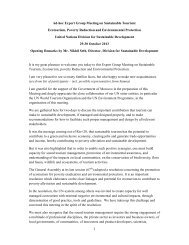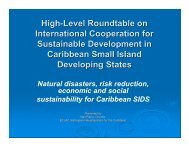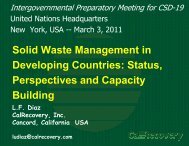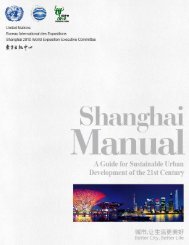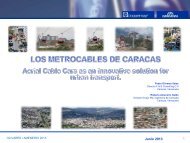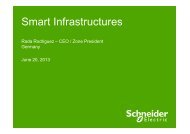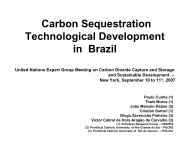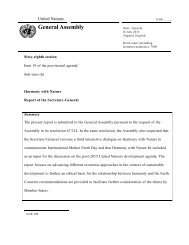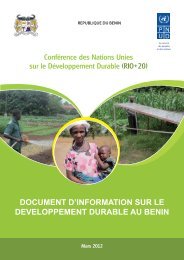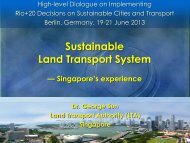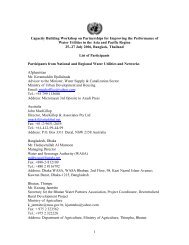Energy Indicators for Sustainable Development ... - IAEA Publications
Energy Indicators for Sustainable Development ... - IAEA Publications
Energy Indicators for Sustainable Development ... - IAEA Publications
You also want an ePaper? Increase the reach of your titles
YUMPU automatically turns print PDFs into web optimized ePapers that Google loves.
energy in electricity generation is the total electricity generated from non-carbonenergy sources divided by total electricity generation.<strong>Energy</strong> use is measured in terms of heat content based on specific net calorific values(NCVs).Electricity from hydropower and other non-combustible renewables (such as wind,tide, photovoltaics, etc.) is accounted <strong>for</strong> by using the factor 1 terawatt hour (TWh)equals 0.086 million tonnes of oil equivalent (Mtoe). Electricity from nuclear power isaccounted based on an average thermal efficiency of 33%; that is, 1 TWh equals0.261 Mtoe (see Annex 1).For electricity generating capacity, the indicator corresponds to the shares of noncarbonenergy in overall capacity.(c) Limitations of the Indicator: For a number of countries, data on non-carbonenergy sources might be a limitation.(d) Alternative Definitions/<strong>Indicators</strong>: None.ASSESSMENT OF DATA(a) Data Needed to Compile the Indicator: TPES and total electricity generationand generating capacity. Primary energy from non-carbon energy options, andelectricity generation and generating capacity from renewable and nuclear sources.(b) National and International Data Availability: Data on energy supply by fuel areavailable from national statistical offices and country publications, and variousinternational sources, such as the International <strong>Energy</strong> Agency (IEA), theInternational Atomic <strong>Energy</strong> Agency (<strong>IAEA</strong>), the World Bank and Eurostat.REFERENCES• EEA, 2002. <strong>Energy</strong> and Environment in the European Union. Environmentalissue report no. 31. Copenhagen, Denmark: European Environment Agency.• Eurostat, various editions. <strong>Energy</strong> Balance Sheets. Luxembourg: Eurostat.• Eurostat, various editions. Pocketbook on <strong>Energy</strong>, Transport and Environment.Luxembourg: Eurostat.• Eurostat, various editions. Pocketbook on Renewable <strong>Energy</strong> Statistics in theEU. Luxembourg: Eurostat.• <strong>IAEA</strong>, 2003. Country Nuclear Power Profiles, 2002 edition. Vienna, Austria:International Atomic <strong>Energy</strong> Agency.• <strong>IAEA</strong>, various editions. Nuclear Power Reactors of the World, Reference dataseries no. 2. Vienna, Austria: International Atomic <strong>Energy</strong> Agency.• IEA, 1990–2001. <strong>Energy</strong> Balances of Non-OECD Countries. Paris, France:International <strong>Energy</strong> Agency.• IEA, 1990–2001. <strong>Energy</strong> Balances of OECD Countries. Paris, France:International <strong>Energy</strong> Agency.75



